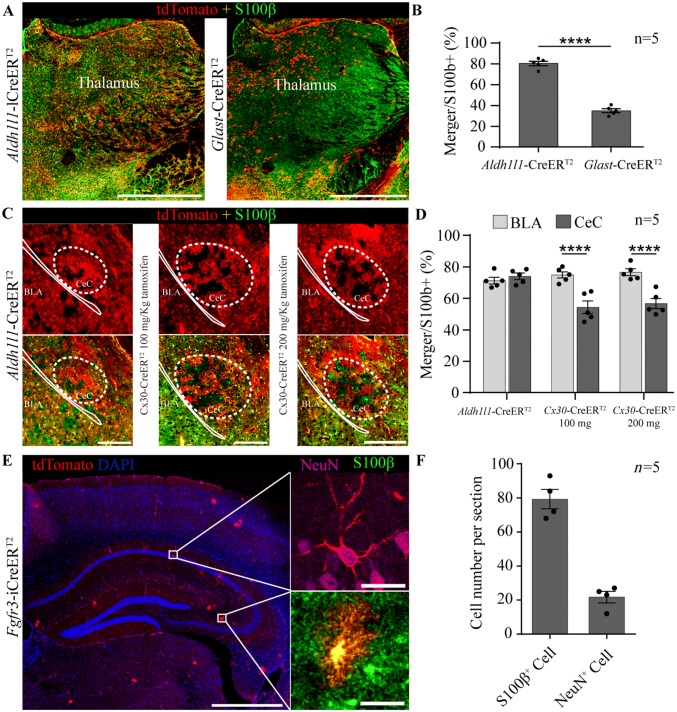Fig. 4.
Unique properties of astrocyte-specific CreERT2:Ai14 transgenic mice. A Representative staining for S100β in the thalamus of Aldh1l1- and Glast- CreERT2:Ai14 mice (scale bars, 1 mm). B Bar graphs showing that the efficiency of CreERT2-mediated recombination in Glast-CreERT2:Ai14 mice was lower than in Aldh1l1-CreERT2:Ai14 mice in the thalamus. C Representative staining for S100β in the basal lateral amygdala (BLA) and capsular part of the central amygdaloid nucleus (CeC) in Aldh1l1- and Cx30-CreERT2:Ai14 mice treated with 100 mg/kg or 200 mg/kg tamoxifen once per day for 5 consecutive days (scale bars, 200 µm). D Bar graphs showing the efficiency of CreERT2-mediated recombination in Cx30-CreERT2:Ai14 mice was significantly reduced in the CeC. E Representative staining for NeuN and S100β in Fgfr3-iCreERT2:Ai14 mice not treated with tamoxifen [scale bars, 1 mm (right) and 10 µm (left)]. F Bar graphs showing the numbers of astrocytes (S100β+, 79.25 ± 5.71 cells) and neurons (NeuN+, 21.75 ± 3.35 cells) per hippocampal section in Fgfr3-iCreERT2:Ai14 mice not treated with tamoxifen. In B, D, and F, the data are shown as the mean ± SEM; ****P < 0.0001, Student’s t test.

